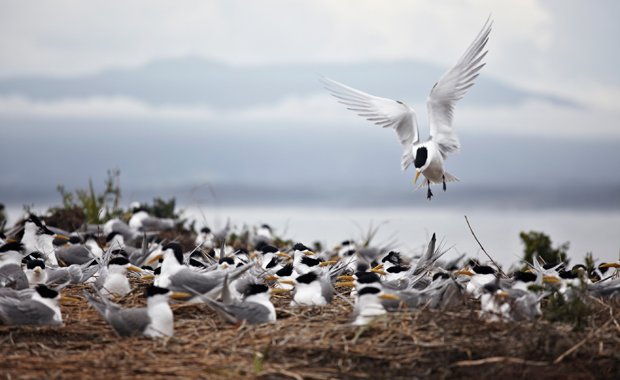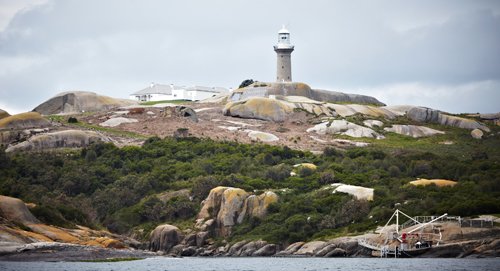Seals and seabirds: Montague Island

EVER DREAMED OF spending a weekend in a lighthouse? Swimming with fur seals? Getting up close and personal with a fairy penguin? Just off the NSW south coast lies a wildlife gem where you can tick all of the above boxes in a single stunning spot. Montague Island is NSW’s second largest offshore island (after Lord Howe Island), and a unique biodiversity hotspot for seabirds and marine mammals. This designated nature reserve is also one of only a handful of places in the country where you can stay in an island lighthouse keeper’s quarters.
The trip out to Montague Island crosses a humpback whale migration highway – we cruise past a couple of mothers and excitable, breaching calves as soon as we exit the Narooma bar. The 12km journey is enough to give a real sense of escape, though not so far that you feel completely isolated.
The island is part of an ancient volcanic crater, which becomes more obvious as you gaze back across the water to the mainland and Gulaga (Mt Dromedary) in the distance, looming 800m above the landscape to form the far side of the ancient crater rim. The island itself is split into two geological parts: a northern half of basalt, and a southern half of rounded, sculptural granite, all topped with rich volcanic soil supplemented by the nutrient-laden guano of thousands of nesting seabirds.
Casually lounging fur seals
The basalt coastline hosts lazy bachelor parties – large colonies of mostly male Australian and New Zealand fur seals call these rocks home outside of the breeding season. When it is time to find a mate, they travel south to the islands of the Bass Strait, making Montague Island the only significant haul-out site for these creatures in NSW.
Lounging casually on the rocks, they occasionally enter the water to cool down, or to show off their swimming skills to any curious snorkelers who enter their patch. They zip, twirl and torpedo through the water with streamlined grace and agility, a complete contradiction of their rather awkward, lumbering movements across the rocks.
The southern, granite half of the island is home to the lighthouse, lightkeepers’ quarters, and thousands of nesting seabirds. Being snake, cat, rat and mostly human-free, Montague Island is an important nesting site for silver gulls, crested terns, wedge tailed shearwaters, short tailed shearwaters, muttonbirds, and little (or fairy) penguins.
Approaching the lighthouse in spring is like running a Hitchcockian gauntlet – hundreds of silver gulls screech and dive-bomb anyone who comes near their eggs or newly hatched chicks. The neighbours, hundreds of nesting crested terns, join in the raucous squawking for good measure. It is a noisy, not-so-welcome-to-the-island from the birds, but a sure indication that this place belongs to the wildlife.
12,000 little penguins
The island is also home to 12,000 little penguins, making it the third largest colony in the world, after Gabo Island and Philip Island in Victoria. Each evening just after dark, the penguins emerge from the sea in their hundreds and make their way back to their nesting sites.
Sheer determination sees them climb, hop and clamber uphill over terrain that must be challenging for a pair of little penguin feet. Guided by instinct in the fading light, they manage to make it back to their own individual burrows to regurgitate the day’s catch to their fast-growing chicks. A limit on the number of overnight visitors on the island makes it a great spot to watch this nightly spectacle.
The real beauty of Montague Island though is the feeling of escape you get from a stay on the island. The abundant wildlife gives you the sense that you are in a remote, windswept, animal kingdom, miles away from civilisation.
But a quick glance up from almost any vantage point on the island is a reminder that this little gem is only a hop, ship and a jump away from the goings-on of the mainland. And if you’re feeling particularly weatherbeaten and exposed, there’s always the option of a hot cuppa in the warmth of the lighthouse keeper’s quarters (next to the lighthouse, below), while you whale-watch from the sitting room window.

Find more information on Montague Island.
RELATED STORIES

